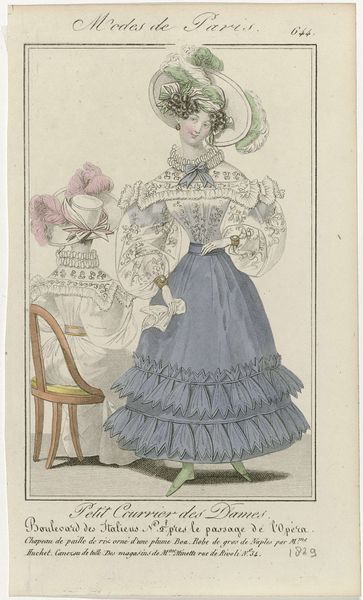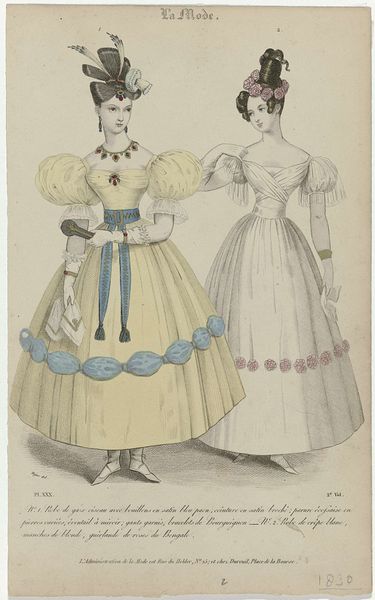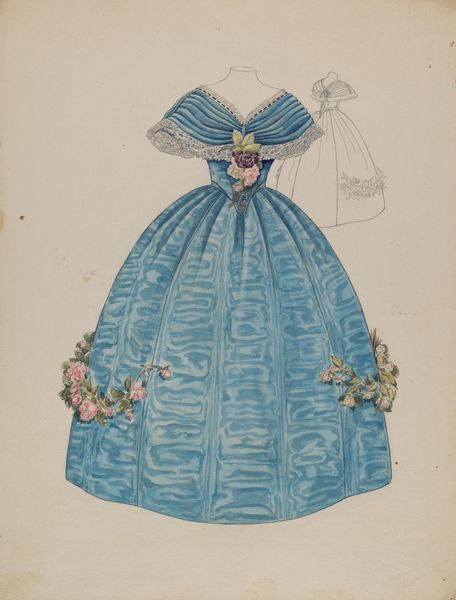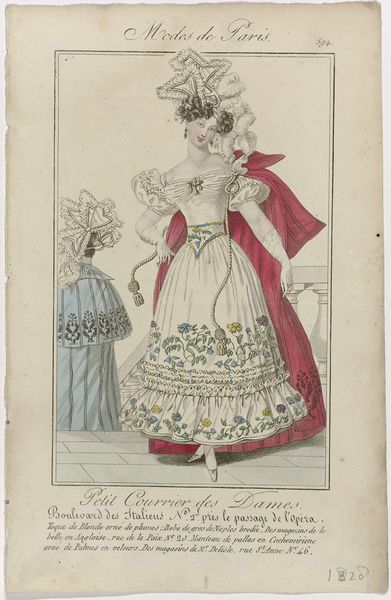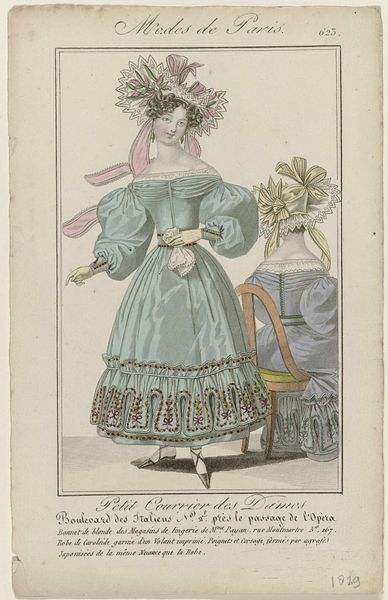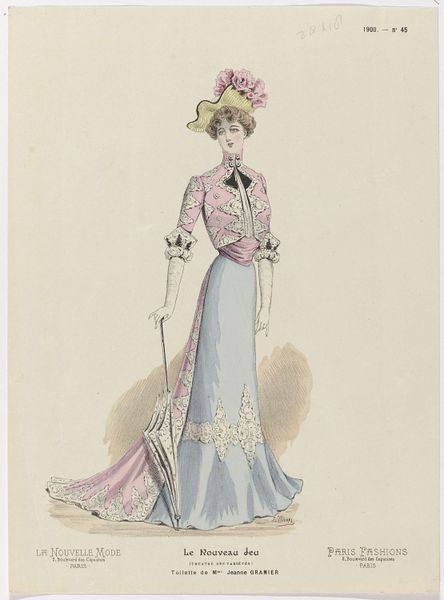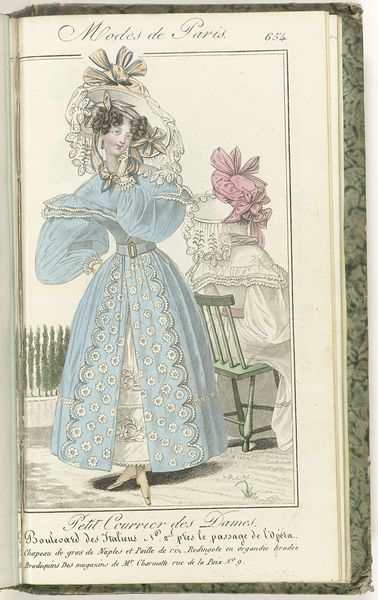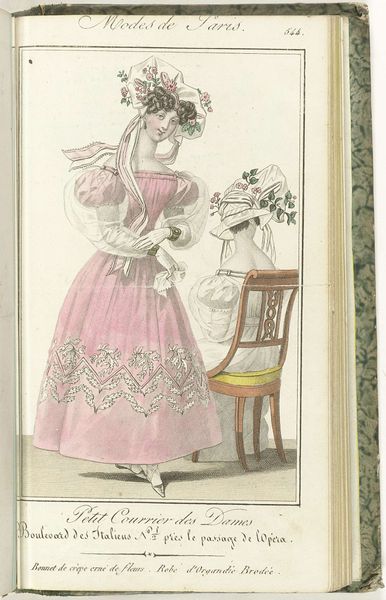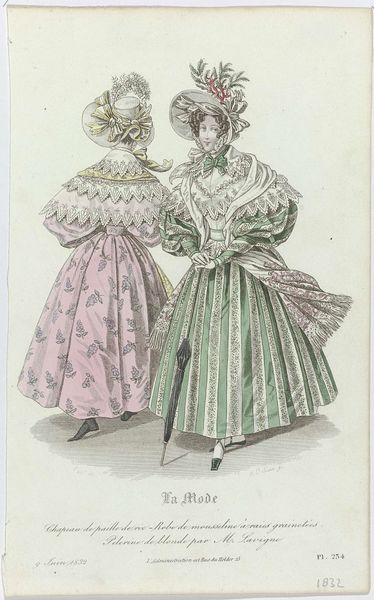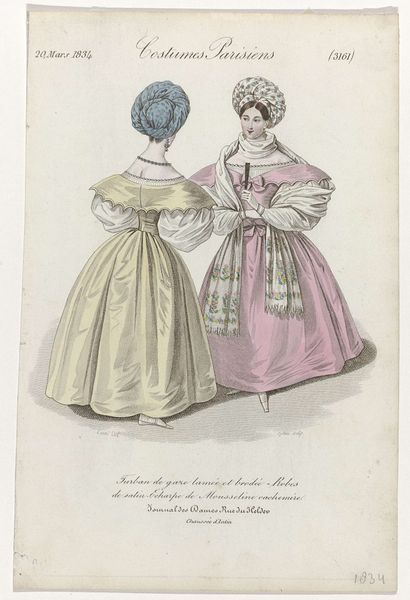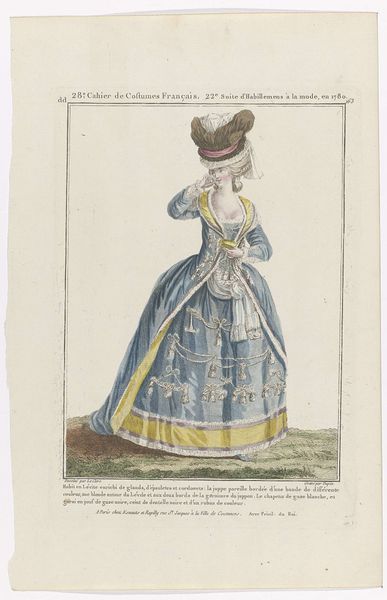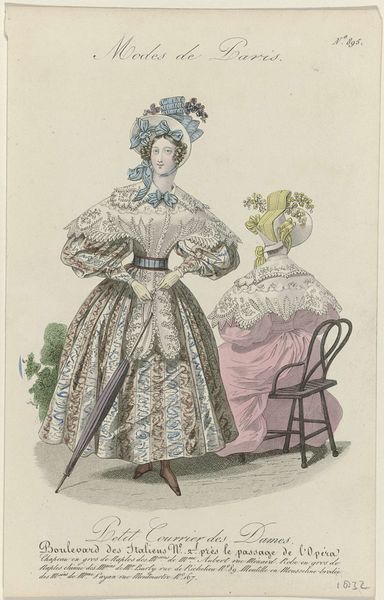
Dimensions: height 241 mm, width 150 mm
Copyright: Rijks Museum: Open Domain
Curator: This print, titled "La Mode, 1830," comes to us from the second volume of an 1830 fashion plate series. The print showcases a gown made of blue crepe. The lithograph utilizes drawing and printmaking techniques on paper to depict these elegant styles. Editor: The scale is deceptive, it appears so demure, and the color palette is reserved at first glance. And then those enormous sleeves explode from the central figure – visually dominating everything, a paradox between restraint and exuberance. Curator: Those "gigot" sleeves certainly exemplify Romantic ideals of the 1830s, paired with delicate trimmings to soften its assertive presence. Notice the flower ornaments; in Romanticism, flowers held a nuanced language, imbuing the depicted woman with virtue and refinement. Editor: Absolutely. We see this repeated in the attention given to the hair. A careful dance is struck by the plumes, pinned so high that they imply the wearer's station. They are offset by what appears to be rouge and small, red embellishments that highlight the sitter's youth. Curator: Precisely. In that moment, these objects reflect codes of femininity. Dresses weren't just for adornment; they served as visual signifiers to the social roles one was assigned to or trying to access, with cultural meaning and performance deeply entwined. Editor: Yet there's also a play of forms and an almost abstracted sense of figure. Note how the rear view silhouette, a simpler rose colored gown, provides an aesthetic foil to its central sister image. A deliberate contrast in line and form that emphasizes cut, silhouette, texture and material over direct figuration. Curator: Yes, the artist effectively uses clothing, accessories, and posture as a shorthand for character. When viewing this, what remains with me is how such a seemingly simple print offers a complex story about society, aspiration, and visual messaging. Editor: For me, it’s the negotiation between form and feeling; the ways a very restricted compositional style nonetheless suggests boldness and presence, revealing a snapshot into sartorial elegance and the careful crafting of an early 19th-century aesthetic.
Comments
No comments
Be the first to comment and join the conversation on the ultimate creative platform.
